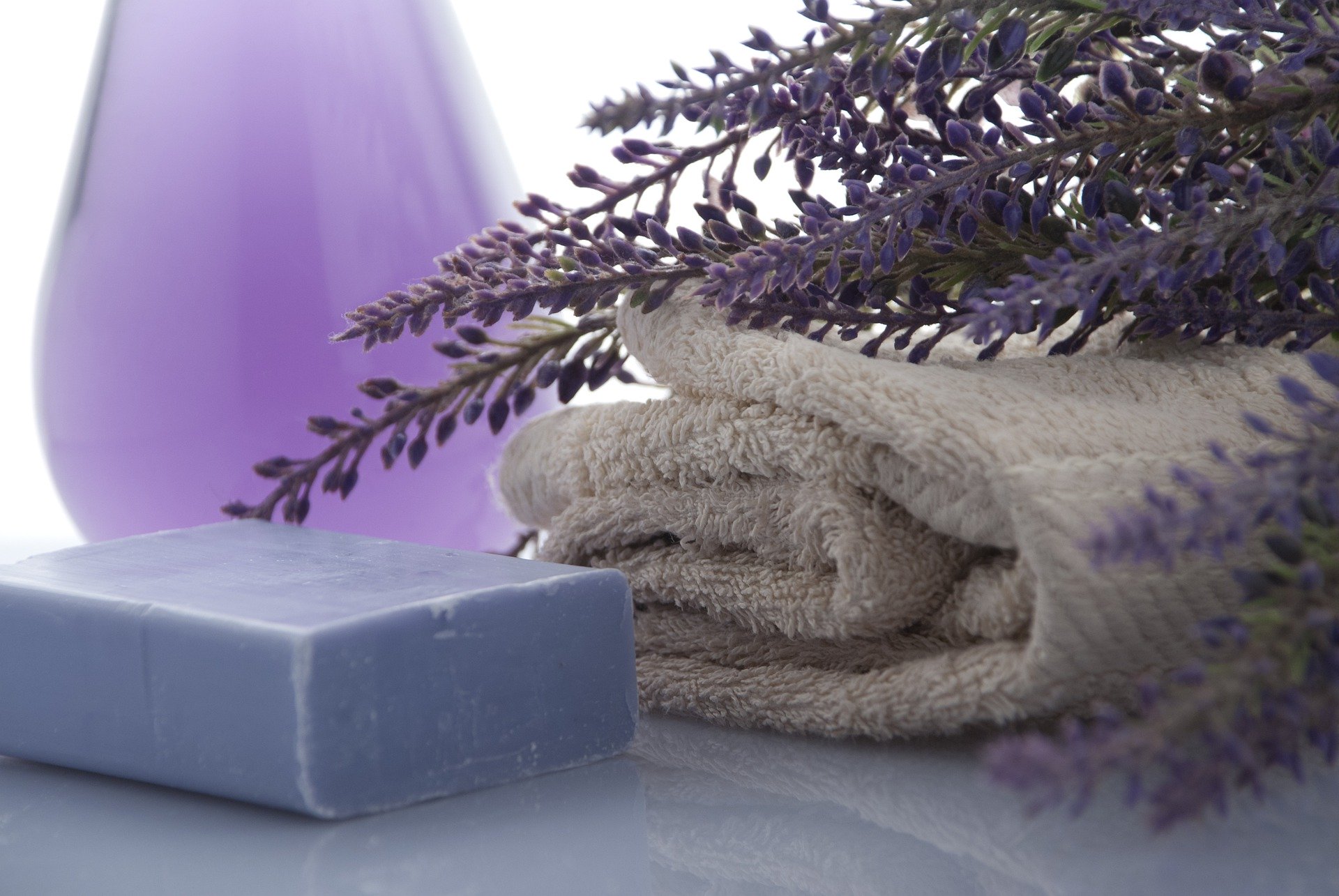Were People In the Medieval Period Clean or Not?

Dirty bodies, rotting teeth, soiled clothes; if these are the things that come to mind when you think of hygiene in the Middle Ages, think again. Dirt was far from fashionable.
People might not have been slathering hand sanitizer on themselves every five minutes, but they certainly maintained a level of cleanliness. So let’s take a look at some ways Medieval people would have kept themselves fresh and tidy.
First, Adjust Your Idea of Clean
Because although your outer appearance is going to win you an evening with that handsome knight, there’s a cleanliness and beauty that goes even deeper.
The state of one’s soul was of the utmost importance in the Medieval period and it influenced every aspect of life. If a person was Spiritually clean, it was sure to manifest externally in the form of great smells and glowing skin.
Whether you were truly holy or not was irrelevant. A clean body meant a clean soul, and therefore extra social brownie points. Therefore, the desire to trick everyone into believing in your sanctity would have been a strong motivator to keep yourself meticulously clean.
Now for a Bath
Yes, medieval people bathed. In fact, people of the middle ages bathed more than any other era after them until the 19th century.
It wasn’t just adults either. Parents were advised to frequently bathe newborns. This would be followed by a nice oil rub. Once clean and dry they would be tucked into blankets scented with rose petals. Sweet dreams were sure to follow.
While babies were being swaddled in roses, adults were soaking in barrel-like tubs covered with tented cloths. Of course, those in the higher ranks would have found it easier to invest the time and money into bathing. A few royals even had water piped in.

King John had a portable tub he took with him on his travels (image Wikipedia)
Having to haul in buckets of water wouldn’t have stopped other nobles from enjoying a good soak, however. Servants were instructed to hang flowers and herbs in between the tented cloths and to line the tub with sponges for added comfort. The lord would be washed with hot water infused with fresh herbs. Rosewater was preferred for rinsing.
Medical issues were another reason to bathe. The Saxon Leech Book of Bald, written in the early 900s, is one of the earliest surviving English herbal guides. Suggestions are made for herbal baths and steams for digestive issues, pregnancy, and age-related issues among others.
Clean Hands Are A Must
As nice as it sounds, one can’t always go for a long soak in the tub. In that case, a steam bath might be in order.
The Trotula is a 12th-century text dedicated to women’s health has a nice section dedicated to beauty and cleanliness. To make the steam, the author suggests heating tiles, then dousing with hot water. The lady should be covered with cloths and remain in the steam until she sweats. This ensures the full benefit of the bath.
Even though baths of any sort would not be a daily occurrence, basic hygienic practices were expected. Medieval courtesy books taught hands, face, and teeth should be washed every morning.
Hands would be cleaned constantly among the aristocrats. Cups and plates were communal and most foods were eaten with the fingers. No one wanted their dining companion to have dirty hands or nails.
For a high-ranking noble, hand washing followed its own ritual. A servant, known as an ewer, would pour scent water over his lord’s hands which were held over an empty bowl. His hands now clean, another servant brought a towel and dried them. Hands would be washed before and after dinner.
To make water for washing hands at the table. Boil sage, strain the water and let cool to a little more than tepid. Or take chamomile and marjoram in stead [of sage], or rosemary, and boil with orange peel. Bay leaves are also good.
Ménagier de Paris (14th Century cookbook)
Washing the Hair
It’s hard to say how often Medievals washed their hair. However, in the 14th-century Italian book Decamerone by Giovanni Boccaccio, every Saturday is mentioned.
Hair did not need to be washed in conjunction with a bath. Instead, a large bowl would be placed on a mat on the floor. The lady (or gentleman for that matter) would then strip to the waist, hang their head over the bowl and scrub away.
The Trotula suggests a woman wash her hair with a mixture made with “the ashes of burnt vine, the chaff of barley nodes, and showbread.” The burnt vine was a source of lye, which is what makes soap. This recipe would make hair golden and shiny. But what if you didn’t have golden hair? Not to worry, a woman with dark hair could cook up a green lizard in some oil, sans head and tail of course, and rub that into her dark tresses.
And for the record, the desire to have lovely locks wasn’t just a female thing. Several 14th and 15th-century writers complained about the vanity of men and their desire for shiny hair and beards.
Polish Those Pearly Whites
With all the care medieval people took on their hair and skin, it shouldn’t surprise you that teeth were cared for as well.
Tooth powders were a popular way of keeping teeth clean and shiny. Twigs, especially those from the Hazel, were popular toothbrushes. Rubbing with Cloth was an option too. Again we get advice from the Trotula :
“ The woman should wash her mouth after dinner with very good wine. Then she ought to dry [her teeth] well and wipe [them] with a new white cloth. Finally, let her chew each day fennel or lovage or parsley, which is better to chew because it gives off a good smell, cleans gums and makes the teeth very white.
Smelly breath was just as unappealing then as it is now. If stomach ailments were the source, a mixture of aloe, wormwood, and honey was the promised cure.
If the cause was bad gums, things were a bit more complicated. This remedy uses quicklime, sulfur, and a bright yellow mineral called orpiment. Vinegar, fire and a piece of scarlet cloth are also needed.
The Smell of Clean
Not only were Medieval people familiar with deodorant, but they also enjoyed perfuming themselves in one way or another.
Pre-14th century, a Medieval man or woman gave themselves a dusting of powder before stepping out for the day. Powders were made from ground rice, orris root or calamus root. Rose petals, lavender, or spices such as clove were added for their scent and also as a prophylactic against disease.
However, it was the crusaders who really got the scent thing going. European men got a whiff of those sweetly scented Muslim women and went nuts. When they came home, they brought perfumes back for their own ladies to enjoy, and possibly to recall the fun times they had on crusade. Rose and lavender became popular for their oils while musk and ambergris were used as fixatives.
Fresh smelling scents weren’t just on the body, however. Clothes were perfumed as well. Rose petals, lavender, and sweet woodruff were often stored with clothing. Edward IV is said to have a fancy for the scent of orris root which is similar to violets.
Nosegays were carried to keep one smelling sweet and to help ward off any nasty germs. These were nothing more than a bunch of flowers or Herbs, fresh or dried, that would be held in the hand, tied around the waist, or pinned to one’s clothing.
Whenever you walked past a smell that was less than savory, you could bury your nose in your little bunch of flowers and pretend it didn’t exist. Well, at least try to anyway.
But What About Your Average Joe?
You may think bathing was reserved for those who had plenty of time to waste splashing around with their rubber duckies.
Well kids, I’m here to tell you it’s just not true. Even if you couldn’t afford fancy soap from Paris as the Trotula suggests, you still washed, and you still used soap. In fact, soap makers guilds in Italy were forming as early as the 6th century.
Housewives everywhere would have been making soap as well. Common folk didn’t have as much time to devote to bathing, but they would have still practiced basic daily hygiene just like their wealthy counterparts.
Let’s face it, your economic status doesn’t change your level of vanity. Everyone wanted to be attractive. Mud on your cheeks and dirt in your hair doesn’t really help you get the girls.
There was one more thing about bathing, you could do it at a bathhouse and make it a social event. In fact, towns often had criers who announced when the water was hot. Admittedly, some bathhouses became more like brothels, but not all. In Paris, there was a guild for Bathhouse owners. The guild required establishments to be morally clean. Rule breakers would get slapped with a fine.
Baths weren’t just in big cities either. Even small towns had bathhouses and oddly they were often connected with the local bakery. This wasn’t because people enjoyed dunking doughnuts in their bathwater. It was a matter of efficiency. The heat from the ovens was the perfect way to heat all that water.
Reality Check
Remember kids, every rule has exceptions. Certainly not every person who lived in the hundreds of years we consider medieval was clean and tidy.
However, that’s not the point. The point is people expected others to practice personal hygiene. Whether you were going to the royal court or the village church you couldn’t walk in looking like you slept in a ditch.
People were going to talk, and they weren’t going to praise you on the beauty of your onion breath. Of course, there were horrid smells in medieval cities and towns, but we have those today as well.
Like today, people did what they could to combat it all — and they did a darn good job. After all, when was the last time you had a hot bath strewn with herbs or rinsed with the fresh scent of rose water?
Sources:
The Trotula: An English Translation of the Medieval Compendium of Women’s Medicine Monica Green
Aroma: The Cultural History of Smell Constance Classen
The Time Traveler’s Guide to Medieval England Ian Mortimer
https://www.ancient.eu/Medieval_Hygiene/
https://www.bbc.co.uk/bitesize/guides/z9924qt/revision/1
Related Posts
The Days When Fashion Was Only for the Rich
In today’s world, the only thing that limits what you wear is the…
October 1, 2020How Cumbersome was Medieval Armor?
The knight in shining armor. Whatever you might think of his social skills, you’ve…
August 20, 2020



Leave A Comment